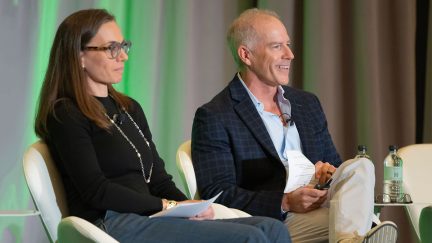Want the latest retirement plan adviser news and insights? Sign up for PLANADVISER newsletters.
Northern Trust Names Head of ESG Investing
The newly created role is designed to meet increasing demand for responsible investing strategies in markets worldwide. Sarr will lead ESG innovation and product development across Northern Trust’s array of asset class capabilities. Building on the company’s success with ESG strategies in passive equity internationally, he will focus on expanding into new opportunities for ESG growth in the global institutional and wealth management markets.
Selecting investments based on ESG standards is a growing movement among institutional investors (see “Running the Fund: Win-Win”). Northern Trust has approximately $58.4 billion in assets under management across a globally diverse set of ESG screened strategies and recently launched three ESG funds in Europe, which have reached the $1 billion mark collectively.
“Northern Trust has realized growing success in ESG investing, given our client-centric focus and more than 25 years of experience managing socially screened portfolios, as well as being a signatory to the United Nations Principles for Responsible Investing,” says Stephen N. Potter, president of Northern Trust Asset Management, based in Chicago. “Expertise in ESG investing is integral to Northern Trust’s comprehensive Corporate Social Responsibility (CSR) platform, and the appointment of Mamadou-Abou Sarr to this new role underscores our commitment to these principles as well as the opportunity for growth in ESG.”
Based in Abu-Dhabi, Sarr will report to Wayne Bowers, head of Asset Management-EMEA & APAC, and will work closely with the Global Equity Strategist team. He will also collaborate with Multi-Manager Investments on outsourced chief investment officer (OCIO) solutions that include ESG considerations.
Sarr has been senior product specialist for global index management, with a strong focus on ESG solutions, since joining Northern Trust in 2011. He has more than 10 years of investment experience, including roles at HSBC Global Asset Management, Morgan Stanley Investment Management and other firms prior to Northern Trust.
Sarr received his B.A. in economics from the Université Paris Sud-Faculté Jean Monnet in Paris, France, and holds a master’s degree in international project management from the European School of Management (ESCP Europe), Paris. Additionally he holds the Islamic Finance Qualification (IFQ) from the Chartered Institute from Securities & Investment (CISI). He is an associate of the Chartered Institute from Securities & Investment (ACSI) and a member of the CFA UK Institute.
You Might Also Like:

Rethinking Opportunities for RIA Growth

Advisers Step Up as Clients Face Market Uncertainty
